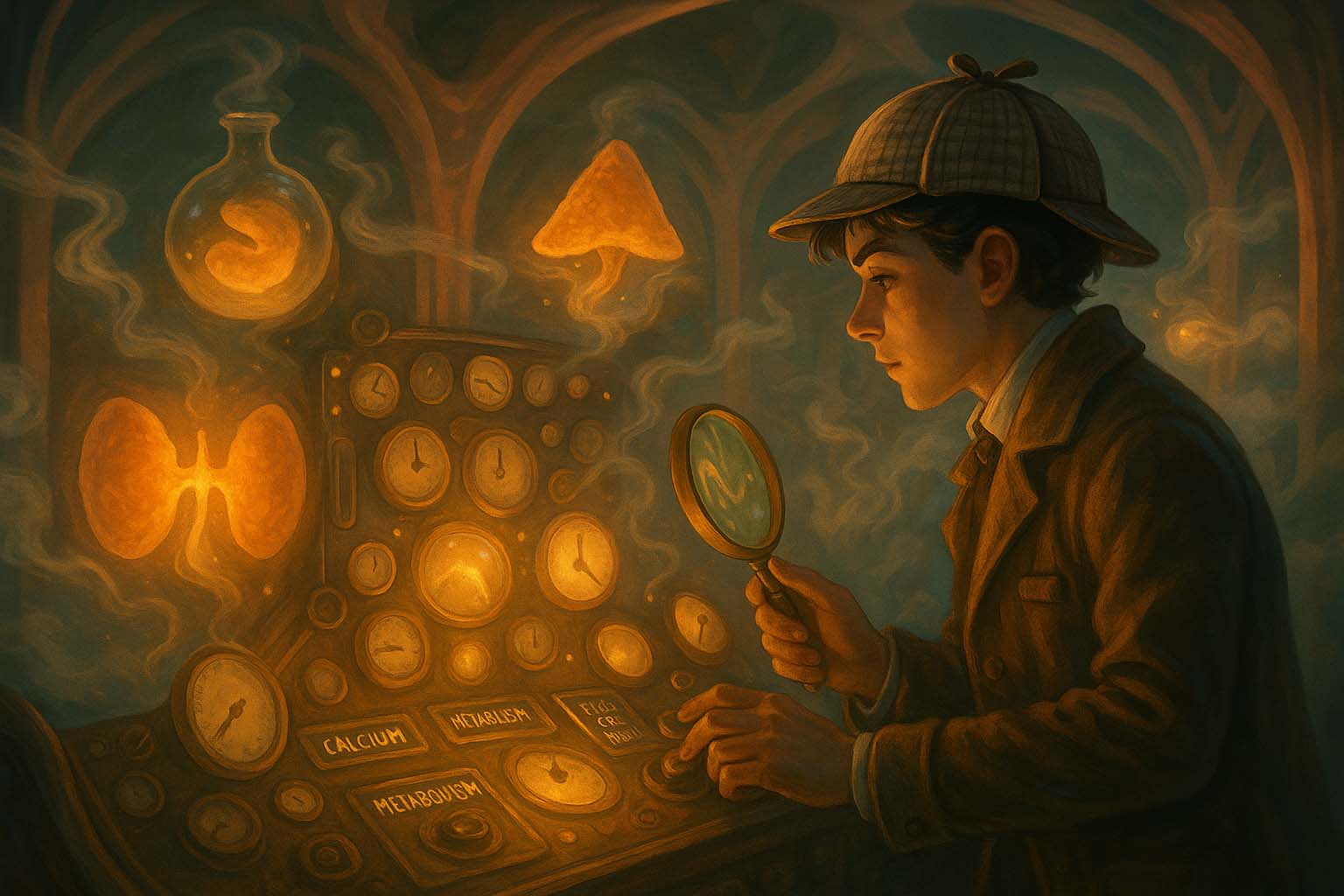
Endocrine Surgery
- Posted by admin
- Categories Specialised Surgical Fields
- Date May 24, 2025
- Comments 0 comment
The Glandular Detective’s Domain - Cracking the Cases of Hormones, Nodes, and the Secrets Hiding in the Neck
1. Introduction: The Scene of the Specialty
Step into the shoes of an Endocrine Surgery sleuth.
This is a field of quiet organs with loud consequences—where tiny glands control metabolism, growth, calcium, and stress. Endocrine surgeons investigate abnormal signals from thyroids, parathyroids, adrenals, and neuroendocrine tissues. Their cases involve subtle shifts in bloodwork, complex imaging, and the steady hands needed to navigate nerve-dense terrain. Welcome to a world where a neck lump might speak volumes, and where restoring balance often requires the gentlest of cuts.
2. Key Mysteries They Solve (Common Conditions)
These detectives specialise in solving cases involving:
- Thyroid Nodules and Cancer – from benign goitres to papillary and medullary carcinomas.
- Hyperparathyroidism – uncovering rogue glands causing calcium chaos.
- Adrenal Tumours – hormonally active masses such as pheochromocytomas or cortisol-secreting adenomas.
- Neuroendocrine Tumours (NETs) – elusive growths with systemic impact.
Each case is a puzzle of hormone levels, imaging, and pathology—solved by a precise plan and a steady nerve.
3. Their Trusted Tools & Techniques
Every detective has their kit—and in Endocrine Surgery, tools may include:
- Ultrasound, Sestamibi Scans, and Fine Needle Aspiration (FNA) – for diagnosis and localisation.
- Intraoperative Nerve Monitoring – protecting the recurrent laryngeal nerve during neck surgery.
- Minimally Invasive Parathyroidectomy – targeting tiny glands with microscopic precision.
- Laparoscopic and Retroperitoneal Adrenalectomy – removing adrenal masses through elegant access routes.
This is delicate surgery in complex corridors—where a slip can silence a voice, and a cure comes from exactness.
4. The Charms of This Field: Why It Captivates the Curious
- Measurable Impact: Hormone levels normalise, symptoms resolve, and biochemical chaos recedes.
- Small Organs, Big Results: A few grams of tissue can completely transform a life.
- Crossroads of Medicine and Surgery: Deep endocrinology knowledge meets tactile surgical technique.
- Calm Complexity: A field for those who thrive on logic, nuance, and discipline.
This is surgery for thinkers with steady hands—where less is more, and precision is everything.
5. Challenges: The Toughest Cases They Face
- Anatomical Density – The neck is crowded: nerves, vessels, glands, airways all converge.
- Intraoperative Surprise – What was thought to be one nodule may be multifocal or invasive.
- Voice and Calcium Risks – Damage to nerves or parathyroids can have lasting effects.
- Patient Anxiety – Even small lumps feel enormous when they involve the throat or hormones.
But the seasoned endocrine surgeon knows: calm focus and thorough planning reveal the way forward.
6. Famous Cases and Hallmark Clues
- The “Classic Presentation” – Middle-aged woman with fatigue, kidney stones, and osteoporosis: primary hyperparathyroidism.
- The “Zebra” – Episodic headaches, palpitations, and sweats: pheochromocytoma.
- The “Aha Moment” – A hoarse voice after thyroid surgery: transient recurrent laryngeal nerve injury.
7. Your Training Trail: How to Join the Investigation
To become an Endocrine Surgery detective:
- Start with general surgery, then sub-specialise in endocrine pathology and operative finesse.
- Study hormone physiology, thyroid imaging, and neck dissection techniques.
- Learn to work closely with endocrinologists, radiologists, and pathologists.
- Practise nerve preservation, cosmetic incision planning, and patient-centred consent.
Whether excising a thyroid nodule or locating a rogue parathyroid, you must balance delicacy with decisiveness.
8. Final Words: The Signature of the Endocrine Surgery Detective
Endocrine surgery detectives restore order to chemical chaos.
They listen to whispers from small glands and act with clarity when those whispers become wails.
They operate in millimetres—but their impact is measured in energy, clarity, and freedom from fear.
So if you’re drawn to surgical subtlety, thoughtful transformation, and the challenge of precision under pressure—then this is your glandular frontier to master.



